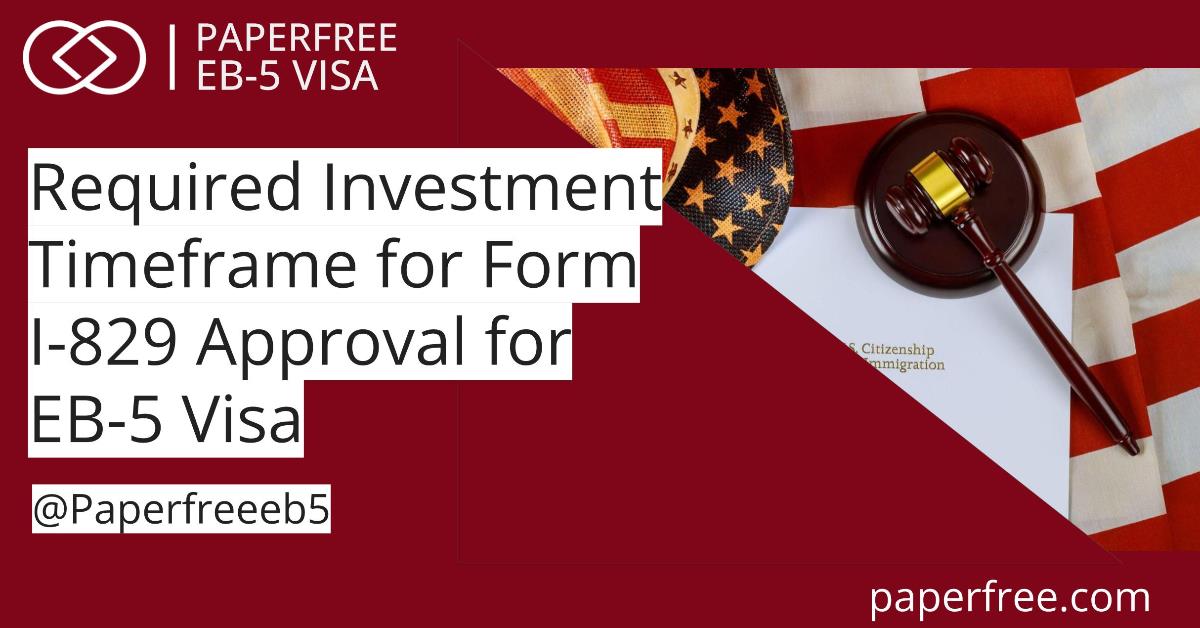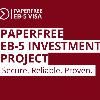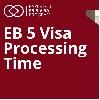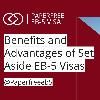How long is the required investment time frame for Form I-829 approval for EB5?
Discover the essential investment time-frame required for successful Form I-829 approval in the EB-5 program.last updated Wednesday, July 2, 2025
#Investment Timeframe for Form I-829 Approval #Form I-829 Approval
| | by Sidra Jabeen |

QUICK LINKS
AD
Get access to EB 5 Visa Investment Projects
Key Points:
- Form I-829 is required to remove conditions on EB-5 permanent residency.
- Investment period: Minimum 2 years, focusing on job creation and enterprise activity.
- File 90 days before conditional Green Card expires; processing takes about 2 years.
- Petition rejection can occur due to failure in job creation requirements.
- Even if a project fails, investors can apply by redeploying capital and showing job creation.
- Approval results in permanent resident status and a new Green Card.
- Collaborating with regional centers and developers is crucial for documentation.
- If all other requirements are met, investors can apply for citizenship after I-829 approval.
What is Form I-829 in the EB5 Visa Program?
Form I-829 is the final hurdle for EB-5 investors to achieve permanent residency in the U.S. This guide explains the latest rules, required documents, timelines, and best practices to maximize your chances of approval
The investment timeframe needed for Form I-829 approval for EB-5 has evolved with the recent implementation of the Revised Investor Visa Program Final Rule (RIA). Here's a breakdown:
Under the RIA, implemented in March 2022
- Minimum investment period: 2 years. Your investment must be "at risk" for at least two years from when you make it available to the job-creating entity.
- Conditional residence period: Typically two years, separate from the minimum investment period. This period starts when you receive your conditional Green Card.
- Filing Form I-829: You can file about three months before your conditional residence expires.
Understanding the required investment period and recent regulatory changes is crucial for a successful Form I-829 petition. Here’s a clear breakdown of how the rules have evolved and what investors need to know:
EB-5 Investment Period: Before and After the RIA
The Revised Investor Visa Program Final Rule (RIA), implemented in March 2022, introduced significant changes to the minimum investment period for EB-5 applicants:
| Requirement | Before RIA | After RIA (March 2022) |
|---|---|---|
| Minimum Investment Period | Not explicitly defined; generally lasted until the end of the conditional residence period (often more than 2 years) | Clearly defined as a minimum of 2 years "at risk" from the time the investment is made available to the job-creating entity |
| Conditional Residence | 2 years | 2 years |
| I-829 Filing Window | About 90 days before conditional Green Card expiry | About 90 days before conditional Green Card expiry |
Before the RIA
- The investment period wasn't explicitly defined but generally lasted until the end of your conditional residence period. This could be longer than two years.
- The timeframe for filing Form I-829 remained similar.
Therefore, under the current rules, the overall investment commitment, encompassing both the minimum and conditional residence periods, can still be around four years on average. However, the crucial change is the clear, shorter minimum investment period of 2 years.
Key Takeaways:
- Under the RIA, your investment must remain "at risk" for at least two years from the time the funds are made available to the job-creating entity.
- The two-year conditional residence period is separate from the investment period and begins when you receive your conditional Green Card.
- You can file Form I-829 up to 90 days before your conditional Green Card expires.
Practical Impact:
- While the minimum investment period is now clearly set at two years, the overall commitment, including the investment and conditional residence, often totals around four years.
- Some projects may require a longer investment to ensure job creation requirements are met, so always confirm specific project timelines.
Additional Considerations:
- USCIS processing times for Form I-829 currently average about two years, which can further extend the overall timeline for achieving permanent residency.
- Filing within the correct window is essential to avoid jeopardizing your status.
By understanding these updated requirements, investors can better plan their EB-5 journey, ensure compliance, and increase their chances of a successful Form I-829 approval.
Additional Factors to Consider:
- Processing times: On average, USCIS takes about two years to process Form I-829, which can add to the overall timeframe.
- Project specificities: Some projects may require more extended investment periods for job creation to be sustained.
Form I-829 Petition Best Practices
To obtain U.S. permanent residency through the EB-5 program, investors must submit Form I-829, the "Petition by Investor to Remove Conditions on Permanent Resident Status." Implementing the following best practices can enhance the chances of the I-829 petition being approved.
I-829 Petition: Culmination of EB-5 Visa Journey
The I-829 petition represents the final stage of the EB-5 visa process, serving as evidence to the United States Citizenship and Immigration Services (USCIS) that the plan outlined in the I-526 petition has progressed positively and all EB-5 program requirements have been satisfied.
Approval of the I-829 petition signifies that the immigrant investor has successfully fulfilled all USCIS criteria. This removes the conditional residency restriction for the investor, their spouse, and unmarried children under 21, allowing them to reside permanently in the United States.
In terms of timing, the I-829 petition can be submitted 90 days before the conclusion of the two-year conditional permanent status period. Investors must be vigilant about the expiration date of their conditional status, as indicated on the initial conditional green card received at the start of the EB-5 process.
The deadline to file the I-829 application is determined by the timeframe specified on the conditional green card.
While the USCIS reviews the I-829 petition, the investor's conditional residency is extended. To avoid jeopardizing the opportunity to obtain a permanent residency card, applying within 21 to 24 months of the investor's two-year conditional residency period is crucial.
The accurate and timely completion of the I-829 petition significantly enhances the petitioner's likelihood of securing US permanent residency under the EB-5 program. The best practices outlined here can serve as a starting point for applicants ready to apply for the removal of conditions on their permanent resident status.
Provide the Correct Supporting Documentation
To file an I-829 petition successfully, the applicant must submit various supporting documents to USCIS as proof of meeting EB-5 program requirements and eligibility to remove conditions on their permanent resident status. The USCIS website offers instructions for Form I-829, including a dedicated section outlining the required evidence. The primary categories of evidence include:
- Evidence of conditional permanent resident status
- Evidence related to the investor’s commercial enterprise, investments, and job creation
- Evidence for petitioners filing as a former spouse or as a spouse or child whose investor spouse or parent has died
- Evidence of criminal history
Due to each investor's unique circumstances, there is no predefined list of required documents. However, the forthcoming sections offer guidelines that outline the types of documents to include.
Depending on whether the investment was made through a regional center or by the individual investor, the regional center may supply some documentation, while others are provided by the individual investor.
EB-5 Collaboration with Regional Centers & Developers
Successful I-829 petitions result from collaboration among EB-5 project sponsors, developers, investor counsel, and regional centers. Precise tracking key metrics is crucial for developers and regional centers to support the petition.
Important metrics include original economic model inputs, such as hard and soft costs, operational revenue, and the total number of jobs created.
Past submissions revealed shortcomings in tracking mechanisms, leading to challenges in meeting EB-5 program job creation requirements. Consequently, project teams must prioritize accurate tracking and maintain meticulous cash flow records.
Proving hard and soft costs involves providing actual receipts and proof of expenditures initiated from the beginning of construction spending. USCIS requires a comprehensive understanding of project revenue, ideally supported by audited financial statements, W-2 forms, and I-9 information.
The tracking effort extends beyond spending and revenue. Applicants must demonstrate the continuous maintenance of EB-5 investment throughout the job creation period. IRS Schedule K-1 (Form 1065) serves as evidence. Collaboration between regional centers, developers, and investors is vital to ensure a social security number is issued for the K-1.
Additionally, regional centers and developers are responsible for deploying investor funds into the project before the consular interview. Team readiness is essential to ensure the investor's smooth first consular interview.
Individual Investor Documentation for Form I-829 in EB-5
To establish lawful conditional permanent resident status, investors must submit copies of the front and back of their green cards. Proof of meeting EB-5 program requirements, including job creation and new commercial enterprise (NCE) formation, is essential. While regional centers and developers provide some documentation, direct investors must supply all required documentation.
For NCE establishment, investors can submit tax returns and evidence of the enterprise's existence during the two-year conditional residence. Proof of capital investment involves bank statements, audited financial statements, or any documentation indicating cash flow to the NCE.
Investors need supporting documents like payroll records and tax documents to demonstrate job creation. Applicants with a criminal history must provide additional documentation, including court records, law enforcement statements, and details of arrests, sentencing, probation, and parole.
While each case is distinctive, the typically required documentation includes the following information:
- Copy of the investor’s green card
- Copies of spouse’s and/or child(ren)’s green cards
- Tax returns for the commercial enterprise. USCIS will typically ask for returns from at least the past five years.
- Proof of investment in the commercial enterprise. Proof can be financial statements or bank statements.
- Evidence that the above enterprise is an ongoing operation must be provided. This can take the form of actual receipts, bank account statements, or formation documents.
- Proof of the required full-time employees must be provided at the beginning of the investment and when filing the I-829. Documents such as I-9s and payroll receipts can be used.
- Any relevant information regarding any arrest or conviction
- USCIS-required fees, including a standard government filing fee and a biometrics fee
Know What to Expect when Filing Form I-829
USCIS lists the current filing address on its Form I-829 page, under the “Where to File” dropdown menu.
USCIS processing times are listed on the Check Case Processing Times page. USCIS may sometimes request additional information to help it adjudicate the petition. They may also request an in-office interview with the applicant. These additional requests emphasize the need for an efficient application supported by accurate tracking from the beginning.
Upon approval of the I-829, the applicant's conditional residency status is replaced with lawful permanent resident status. Subsequently, the investor is issued a new green card reflecting this updated status.
After filing the I-829 petition, how will the investor's status be affected?
Upon applying, USCIS issues a filing receipt to all parties undergoing review, including the primary investor, their spouse, and dependents. This receipt serves as a means for the investor to monitor the application status and confirms the extension of conditional resident status during USCIS's review. Furthermore, the notice grants the investor work and travel authorization.
After filing the I-829, USCIS will send a written notification of the date, time, and location of the applicant’s biometrics (fingerprinting) appointment. The investor must appear at the scheduled time; otherwise, the application may be denied. It is possible to reschedule an appointment, but USCIS requires specific steps to do so.
I-829 Petition Options for Failed EB-5 Projects
In the event of an EB-5 project failure, an investor can still attain permanent resident status through a successful I-829 filing. The filing's success hinges on the investor's current immigration status and the original business plan's level of success. Even if the conditional residence period has commenced, I-829 approval is possible.
In such cases, the investor must demonstrate two key points: the ability to sustain the initial EB-5 investment and the creation or future creation of the required full-time jobs within a reasonable timeframe as per the EB-5 program.
USCIS does not mandate the establishment of a thriving business. The investor is eligible for permanent residence if the necessary jobs are generated and the application requirements are met, even temporarily.
If the project has failed before satisfying the EB-5 requirements, capital redeployment is a viable option for an investor. However, the redeployment must be done through the NCE rather than the individual investor.
Because the I-829 petition is substantial and complex, investors should work with experienced immigration counsel to prepare the petition.
The Role of an EB5 Visa Consultant for the I-829 Petition
An EB-5 visa consultant helps guide investors through the intricate Form I-829 process, which is needed to remove conditions on permanent residency. They also assist in preparing and organizing the necessary documentation, such as proof of continued investment and job creation, ensuring compliance with the Revised Investor Visa Program Final Rule (RIA).
Consultants also help investors understand and meet the two-year minimum investment period, coordinate with regional centers and developers to track job creation metrics, and navigate any challenges that arise during USCIS processing. By providing expert advice and meticulous support, EB-5 visa consultants enhance the likelihood of a successful I-829 petition, enabling investors and their families to secure their permanent U.S. residency seamlessly.
Book Your Free Consultation with Paperfree EB-5 Visa Experts. Get Personalized Advice and Investment Plans. Book Your Free Consultation Today!

Frequently Asked Questions
Can I-829 be rejected?
Failure to meet job creation requirements: The EB-5 program requires the investor's investment to create a minimum of 10 jobs for U.S. workers. If the investor fails to meet the necessary targets or provide satisfactory evidence of job creation, it can result in a denial of Form I-829.
What is the approval rate for I-829?
You will need to be able to provide detailed information about your business operations, employees, and customers. You should also be familiar with your business's financial records. The approval rate for an I-829 application is about 95%.
What happens after I-829 is approved?
When an I-829 is approved, the applicant's conditional residency status is replaced by a lawful permanent resident status. Once this occurs, the investor will receive a new green card reflecting the status change.
How long does it take to process an I-829 petition?
It usually takes up to three years. Investors and their family members keep permanent residency status while the I-829 is processed; they get an extension for a conditional Green Card.
Can I apply for citizenship while I-829 is pending?
EB-5 investors with pending I-829 Petitions may apply for U.S. citizenship if they meet all other naturalization requirements. The application for naturalization, however, will not be approved until the I-829 is approved. Applying for citizenship will force USCIS to adjudicate the I-829.
How do I expedite the I-829?
Here are some potential benefits of filing a mandamus action in federal court for a delayed I-829 petition: Timely resolution of the petition: The most significant advantage of filing a mandamus action is that it can help expedite the resolution of the I-829 petition.
Can the Required Investment Timeframe for Form I-829 Approval Vary?
While there are general guidelines, the required investment timeframe for Form I-829 approval in EB-5 can vary based on individual circumstances and USCIS processing times.
Are There Specific Documents I Need to Submit with Form I-829?
Yes, various supporting documents are required for Form I-829, such as proof of lawful conditional permanent resident status, evidence of meeting EB-5 program requirements, and documentation related to job creation and capital investment.
Can I Apply for Form I-829 Before the Two-Year Conditional Permanent Status Period Ends?
Yes, applicants can submit Form I-829 90 days before the conclusion of the two-year conditional permanent status period. Timely filing is crucial to ensure continuous lawful residency.
For more detailed information and guidance on each of these steps, resources and assistance are available at paperfree.com/en/eb5.
Free EB-5 Visa Consultation
Pages Related to: Investment Timeframe for Form I-829 Approval, Form I-829 Approval
- EB 5 investment projects list

- Papefree EB5 investors magazine your source for EB5 insights. EB5 News.

- EB5 Investment Visa Guide 2025

- EB-5 Visa Program by Paperfree.com is Your Your Clear Path to Investment Green Card USA

- US Immigration: Big increase in EB–5 visa fees proposed

- EB5 Processing Time: A Journey Towards Green Card 2024 | Paperfree.com

- Set Aside EB-5 Visas Benefits and Advantages

- July 2025 Visa Bulletin: EB-5 Investment Visa Program Shows Positive Movement

Popular for EB 5 Program
Benefits of the EB-5 Visa Program | Guide
Search within Paperfree.com
